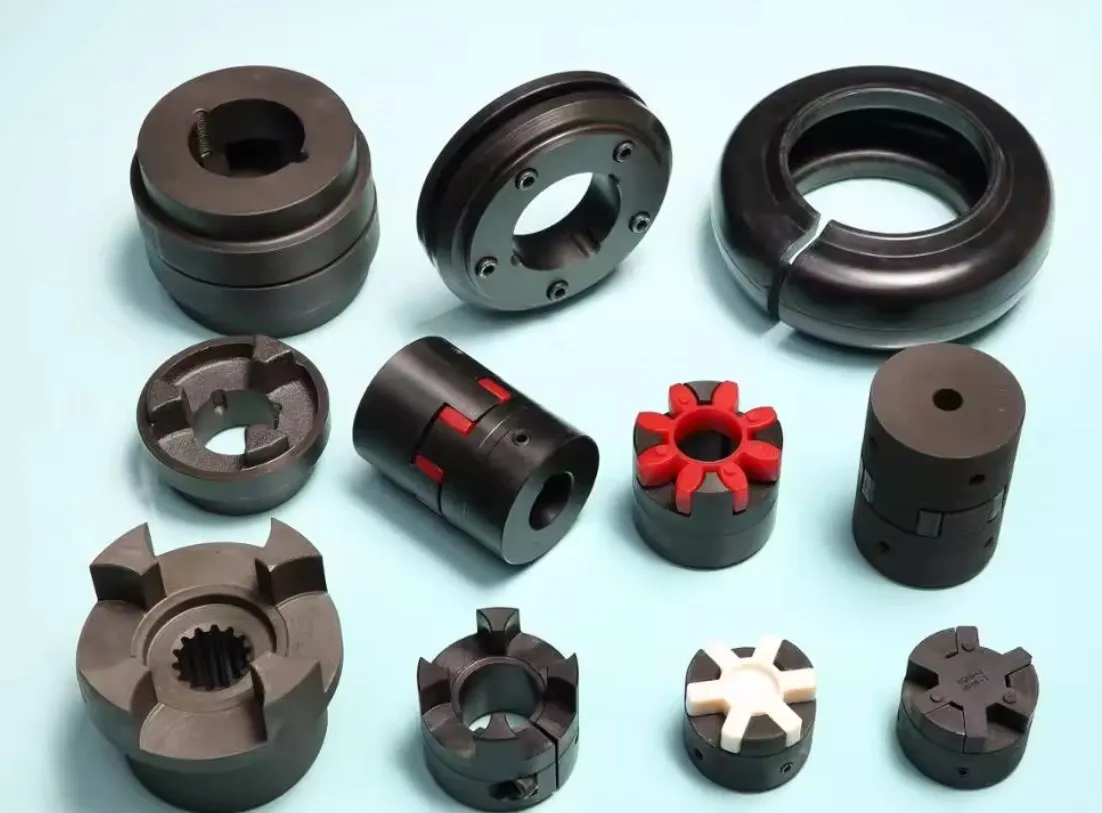Elastic Coupling for Race Cars
Introduction to Elastic Couplings
Elastic couplings are critical components in race cars, ensuring seamless power transmission and protecting the drivetrain from shock loads.
Understanding Elastic Coupling
Elastic couplings connect two shafts, offering flexibility and resilience. They mitigate misalignment, vibrations, and mechanical wear, crucial for high-performance applications like race cars.
Advantages of Elastic Coupling in Race Cars
By absorbing shocks and compensating for misalignment, elastic couplings enhance the longevity and efficiency of race car drivetrains, providing a smoother driving experience.
Types of Elastic Couplings
Elastic couplings come in various forms, including jaw couplings, tire couplings, and bellow couplings, each with specific advantages tailored to different racing conditions.
Material Composition
These couplings are often made from high-strength rubber, polyurethane, or composite materials, offering excellent elasticity and durability under high-stress conditions.
Design Considerations
The design of an elastic coupling involves balancing flexibility and strength. Engineers must consider factors like torque capacity, rotational speed, and environmental conditions.
Performance Metrics
Key performance metrics for elastic couplings include torque rating, maximum angular misalignment, and damping capacity, all crucial for optimizing race car performance.
High Elastic Rubber Coupling
High Elastic Rubber Couplings are a specific type of elastic coupling known for their superior flexibility and damping properties.

High Elastic Rubber Coupling: Benefits
These couplings offer excellent vibration isolation, reducing wear and tear on the drivetrain components.
High Elastic Rubber Coupling: Applications
They are commonly used in high-speed applications where alignment accuracy is crucial, such as in race cars.
High Elastic Rubber Coupling: Durability
Made from advanced rubber compounds, these couplings exhibit outstanding resistance to environmental stresses like heat, oil, and chemicals.

What are Flexible Couplings Used For?
Flexible couplings are versatile components used across various industries, including automotive and industrial machinery.
Reducing Misalignment
Flexible couplings compensate for minor misalignments between connected shafts, ensuring smooth operation and reducing mechanical wear.
Vibration Damping
They absorb and dampen vibrations, protecting sensitive components from damage and enhancing the overall performance.
Shock Load Absorption
Flexible couplings can absorb shock loads, preventing sudden torque spikes from damaging the drivetrain.
Facilitating Maintenance
They simplify maintenance by allowing easy disassembly and reassembly of connected components.

What are the Three Types of Coupling?
Couplings come in various types, each designed for specific applications and performance requirements.
Rigid Couplings
Rigid couplings provide a solid connection between two shafts, suitable for applications where precise alignment is necessary.
Flexible Couplings
Flexible couplings, such as elastomeric and spring couplings, offer flexibility and vibration damping, ideal for dynamic systems.
Fluid Couplings
Fluid couplings use hydraulic fluid to transmit torque, providing smooth acceleration and load balancing in heavy machinery.
Choosing or Customizing the Right Elastic Coupling
Selecting the appropriate elastic coupling involves understanding specific parameters and operating conditions.
Torque Requirements
Determine the maximum torque the coupling will need to transmit, ensuring it matches the application’s demands.
Rotational Speed
Consider the operating speed range, as high-speed applications require couplings with robust dynamic balancing.
Environmental Conditions
Evaluate the working environment, including temperature, chemical exposure, and humidity, to choose the right material.
Misalignment Tolerance
Identify the level of shaft misalignment the coupling needs to accommodate, selecting a design that provides adequate flexibility.
Space Constraints
Assess the available installation space, ensuring the coupling fits without interfering with other components.

HZPT: Your Trusted Partner for High-Precision Couplings
HZPT, established in 2006, is a leading manufacturer specializing in the development and production of high-precision couplings, ball screw support units, motor brackets, and motion modules.
Advanced Technology
We leverage cutting-edge technology to design and manufacture our products, ensuring superior performance and reliability.
In-House R&D Center
Our dedicated R&D center allows us to innovate continuously, developing customized solutions to meet specific client needs.
Comprehensive Processing and Testing
We maintain our processing and testing systems, ensuring strict quality control and adherence to industry standards.
ISO 9001:2015 Certification
Our operations are ISO 9001:2015 certified, demonstrating our commitment to quality management and customer satisfaction.
Global Recognition
With over 96 product lines, our couplings are widely used and recognized by top clients in Japan, the USA, Germany, Israel, Malaysia, Singapore, and Taiwan.
Why Choose HZPT Elastic Couplings?
Our elastic couplings are designed to meet the highest standards of performance and reliability, making them an ideal choice for your high-precision applications.